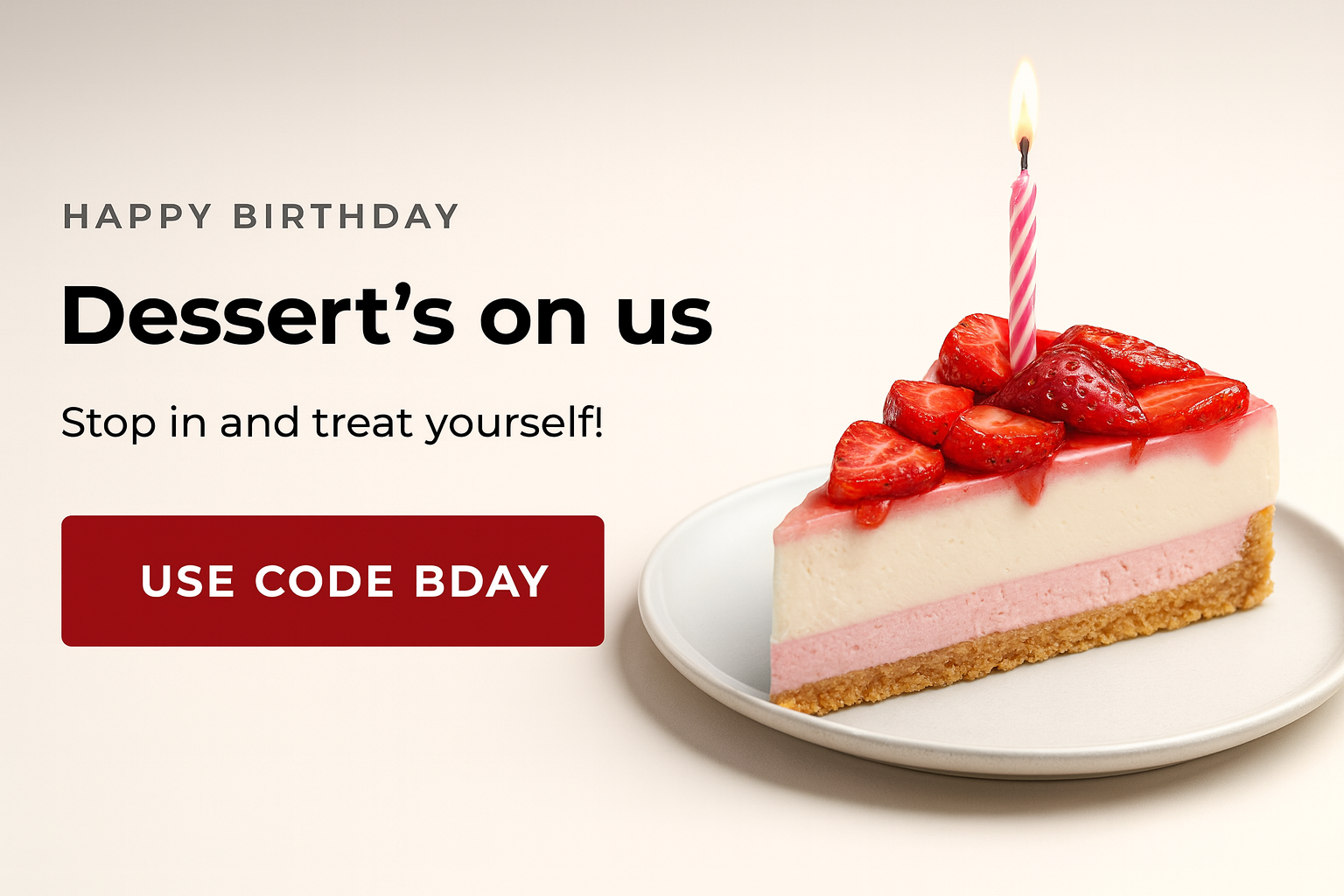Key Takeaways
Are you a food entrepreneur searching for new ways to attract customers to your business? Building a brand, creating content, mustering up a marketing strategy, and making its materials are a must for the survival and success of an e-commerce business. Their quality will highly affect your sales traction, customer perception, and trust in your brand. Thus, you must ensure that you make the best of them.
But here's the problem, one, they may be costly. Gartner's research revealed that marketing spending ranges from 6.4% to 9.5% of revenues. It may be a high cost, especially for E-commerce startups where revenues are not that high.
Second, it's not easy to create content. There are many factors to assess to lead to a successful content start; customer preferences, activity, current trends, etc. Plus, though surprisingly, the majority, About 70% of marketers, still need a consistent content strategy, based on research from Altimeter.
Third, building a good brand means that you should earn your audience's and customers' trust. But it's hard to earn such trust with just your words and good marketing. It would be best if you had someone to back up your claims.
How do you deal with crucial items that have several problems to encounter? Leverage user-generated content. Don’t miss the chance engage your followers and customers in promoting your business.
👉Also Read: How To Make A Restaurant Brand Contagious Online

Image from Vecteezy
What is User-Generated Content?
Firstly we should ask, what is user-generated content anyway?
User-generated contents are contents made about and around your restaurant. They are made by customers who are outside your company. In short, UGC is the result that came up if you searched the Internet for ideas on what other customers have to say about your brand. For example if your restaurant has a social media account, photos and videos about your food on shared on Instagram are considered user-generated content
User-generated contents are organic, meaning you don't have to put any effort or influence to get them. So if you don’t put effort or influence on them, why do they make this user-generated content? How does it benefit them?
That’s actually one of the answers. Customers usually generate content independently when they are under strong emotions. When your product or service gives them great benefits or makes them at least satisfied, they are likely to create content about it. Consequently, and you should beware, they also make content when they are dissatisfied with your product. So you should always ensure that you deliver them the best. And if a complaint, ticket, or negative feedback content comes out, you know how to respond and contain the situation.
People also make user-generated content to educate people. By expressing their experience with your product or brand, they inform and influence your potential customers into availing your offer. A highly satisfied customer who submitted a review on your website is an excellent plus for others to buy your product further. Content creators also create user-generated content for you when they create content that layout options of different products and brands (and yes, even without sponsoring them) to their audience.
Do only content creators layout options to an audience? Absolutely not. Usually, when people with common goals or set ideas meet online, they build a community. Online communities aim to achieve a common goal, share common ideas, or patronize a certain brand or product. When your brand or product fits into what they have in common, they share it with their community, and you get endorsed, remember, for free.
Let's take a closer look at how you may leverage user-generated content to develop your restaurant's brand:
1. Product Reviews
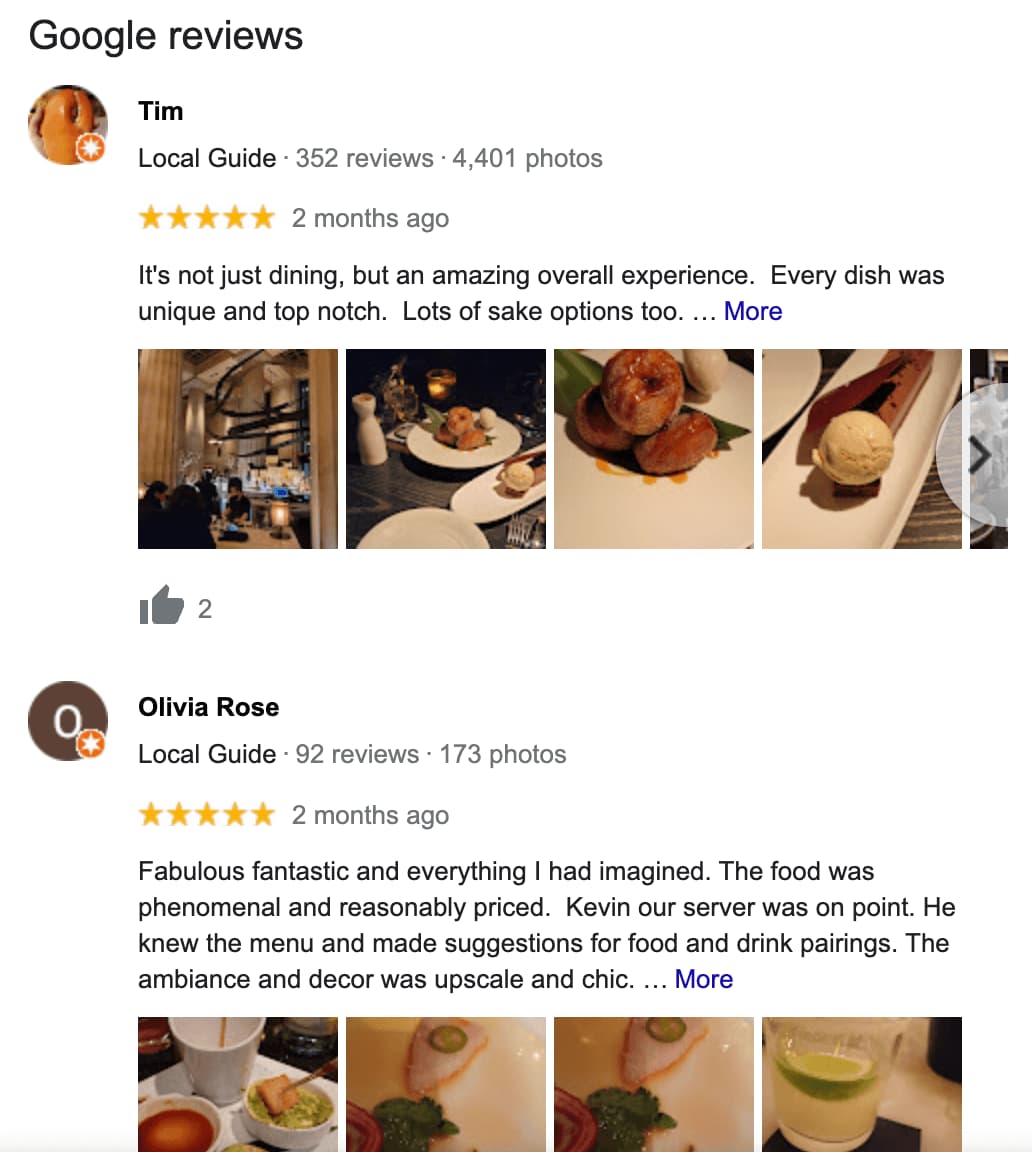
People create and publish user-generated content at communities and your websites. These contents tell other audiences about their experience with your products and can also be a key performance indicator for you. They are a great source of feedback for your product. You'll discover rooms for improvements and strengths to magnify, and with it, you can read more about how your current and potential customers think when choosing a product. Always remeber that customers will likely believe what other people have to say about your restaurant than what you have to say.
2. Rich Snippets

Similar to product reviews, rich snippets indicate your customers' restaurant experience. They come as ratings under search results. A high-rating rich snippet is more likely to rank up in search engine results and raise customer trust in your product.
3. Forum comments
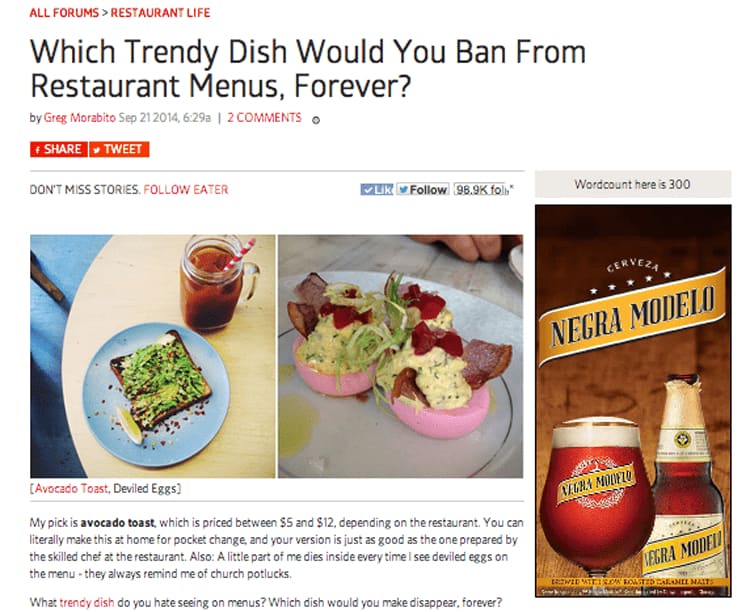
Remember how product reviews are created and published in communities? Comments around a product review within a community are considered user-generated content too! They either dispute the authors, provide additional insight about a product, or validate the review. Either way, boost your restaurant’s popularity by extracting necessary information such as price, review, rating, and availability.
4. Blog Posts

Blog posts create a story, an outline, or a layout of what a product is about and influence their readers' lifestyles and choices. Bloggers usually aim to inspire and inform their readers. Many bloggers enjoy sharing restaurant food reviews. They most likely captured some excellent photos of a particular dish at your restaurant. You can also write a blog on your website using user-generated content. Such blog postings might be really effective for your branding initiatives.
👉Also Read: Do I Need A Blog For My Restaurant Online Ordering Website? Experts Answer
5. Social Media Posts
Facebook and Instagram posts, tweets, and other posts from social media amplify your voice to a large network of people. Be it posts in the form of images, videos, or text since people love sharing their experiences. Social media posts are considered excellent user-generated content for E-commerce. When you notice somebody has tagged your restaurant on Instagram, Facebook or Twitter. Take time to repost and give credit to the person.

6. Brand Hashtags
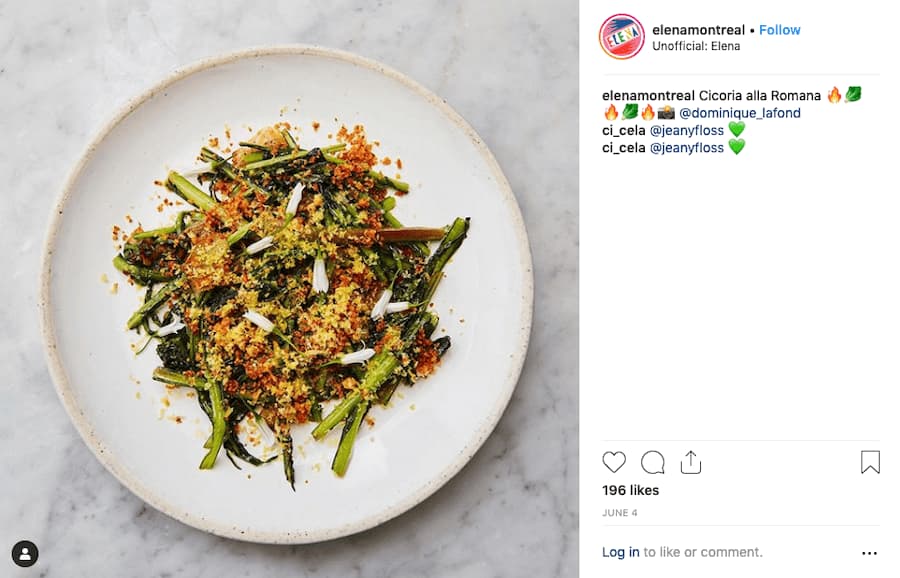
Popular hashtags are frequently searched for on social media, so using them is a wonderful way to boost your online interaction. For optimum success, create a hashtag that is unique to your event and urge visitors to incorporate your restaurant's hashtag when sharing it on social media.
Why is User-Generated Content Valuable in Restaurant Business?
First off, user-generated content invokes more trust in your customers and audience. According to Zdnet.com, 92% of Consumers base the product's worth on UGC. It’s undeniable that positive feedback from outside your food business validates your claims and promises around your food.
One type of people that creates user-generated content is amateurs. Amateurs usually provide raw and unedited content. These amateur creators make these kinds of content that give their audience a sense of authenticity of how actually is their experience in availing your food services, thus, increasing your credibility in the market.
Aside from authenticity, user-generated content is also a good way of connecting your brand to people. Since it is made by creators and community members whom audiences can relate to, this content gives a sense of inclusivity to their lifestyle and identity, thus also creating a sense of necessity to try and taste the cuisine you can offer.
User-generated contents are also potentials for great marketing content that you can sponsor. When an influencer or creator that generates content about or around you gets the attraction, you can channel your resources and let them endorse your product more, raising brand awareness to your target audiences to get the best out of the emerging trends. It also gives you large cost savings, as these UGC silos take a large part of experimentation for marketing content that your target market will bite for free. Just as they say, "Don't panic, it's organic!"
Even for content that does not receive substantial attention, resharing user-generated content from different creators, bloggers, influencers, and reviewers on your official page will boost and widen your social reach and attract more engagement and followers.

Tips on How to Leverage User-Generated Content for your Restaurant Business
We saw what user-generated content is, what their types are, and how they can help your food business.. Here now are some tips on how to leverage user-generated content for your restaurant business.
1. Reshare good UGCs
One good way of leveraging user-generated content for e-commerce is simply resharing your clients' posts about your restaurant. As discussed earlier, they increase your potential customer's trust and relatability to your brand.
But you can do more than resharing their walls. You can also edit them before reposting them. You can graphically edit images from creators' posts to emphasize your brand and enhance your audiences' brand awareness. You may also edit them so that the content fits the theme you are trying to portray. This way, your target audience can relate more to what they see on your reposted user-generated content creator's posts.
2. Product Images
As you and almost all E-commerce business owners already know, product images are a must for your website. They are the most basic reference for your customers of what they're going to buy should look like. Make sure to make your food plates Instagrammable and appetizing. Since this is a crucial part of the business, you must ensure that your product pictures have the best quality and impress your customers while being as real as possible you can also set up.
Aside from editing the pictures (sharpening their colors, adjusting the hue, etc.), putting them on a white background greatly highlights their features. However, it dulls the products' context in your customers' minds. It might separate the product from your customers' perceived experience around it.
Adding user-generated content from creators, influencers, or blogs may help you with this. They provide context to your customers on how to use your product well. They might even open a whole new set of use cases for your product, which you might have not yet discovered, and add it to your product description.
3. In-site Shoppable Gallery
This is one of the best usages of user-generated content for Ecommerce. Aside from resharing posts, you can also import them to your website. Then you can compile them and turn them into a gallery from which your customers can derive inspiration like:
- A picture of their meal was shared with their Social media followers
- A video or a reel on Instagram when they are at your restaurant
- A picture of their takeout order
Now, adding links on each of the content you imported will redirect your customers to their desired products they saw on the content and will give you an In-site Shoppable Gallery. In-site Shoppable Galleries are great for E-commerce as they provide context for your customers of what combinations of your products fit them from looking at the UGC you imported as a reference. And giving them easy access to the product when they have decided to purchase through the links on the said galleries.
4. Incorporation of UGC into your social ad
Including user-generated content in your social media or website advertisement will increase your click-through rates by four times than that of without including one. Social promotions only have a few seconds to catch their audiences' attention and make them click through them. Upon seeing user-generated content from a user, your audiences can relate to increasing their interest in your food product, or adding a product review will increase their trust in what you're selling.
Before doing this, see to it that you must:
sent out permission request to the content creator
Repurpose it in your marketing campaigns
5. In-Store Displays
You can even benefit from using user-generated content if you have a physical store. You are giving a sense of relatability to your customers; physically adding these to your walls where your walk-in customers can see them may encourage them more to close a sale. Having modeled and showcased products tickles your customers' imagination of how they live their lives with those products. It's the same with the user-generated content for ECommerce. The difference is just one, they are organic, which saves you costs since you don't have to put many resources to get them, and two, they provide authenticity and build trust for your customers regarding how your product tastes like. You can install a creative signages, set-up a photobooth, put up games with prizes, or make an specialty menu item for your restaurant. This main focus is enhancing the consumer experience.
6. Creating Brand Hashtags
Communities help Ecommerce businesses widen their social reach. And communities and blog posts usually start with just one story. That story can start when you bring brand hashtags. Brand hashtags may separate your brands and give inclusivity to your audiences. It invites people to work around you and create user-generated content for you. What's good is that hashtags can be a starting common idea among the people using such hashtags and may jumpstart a community that is co-anchored with your brand.
👉Also Read: Generate More Leads From Instagram Marketing
Hashtags make it easier for people to find content faster whether they're on Twitter or Instagram. Make a succinct, recognizable hashtag that users may use to discuss your restaurant business. This facilitates customer sharing while also making it simpler for you to track down UGC that mentions your company.

Not yet employing UGC in promoting your restaurant? Try now!
Engage your customers. Compared to other types of material, user-generated content is more effective at engaging the audience.
Use social influence. Social proof can be found in any user-generated content about your restaurant and they assist in persuading potential clients that your restaurant is worthwhile going to, and that your food is delectable.
Spend less on content marketing. You don't need to employ a group of content producers and photographers if your customers produce high-quality visual content. You are free to utilize the pictures and videos that your customers posted.
Personalize your marketing. There is more to the restaurant business than just delectable food and pleasant ambiance. It all comes down to your customers. The people who support your restaurant on social media are inquisitive about who dines there.
Now you have a look at user-generated content, and how it impacts your restaurant business, one thing left is you choosing to use them. Such free things that give you so much. Use these to your advantage and you’ll surely get your food business more traction to success and growth.
This is a Guest Blog Post, Created by
John Rev, Removal.AI
John Rev is an Accounting Information student and a tech enthusiast. He is particularly interested in applying the strategies he learns from writing content on eCommerce, tech, accounting, and content writing tips.
💡You Might Also Like...
👉 Can Direct Mail Drive Online Sales For Restaurants?
👉 5 Best POS Systems For Restaurants - Pros, Cons & Pricing
👉 How Restaurants Can Skyrocket Conversions With Facebook Ads
Frequently Asked Questions
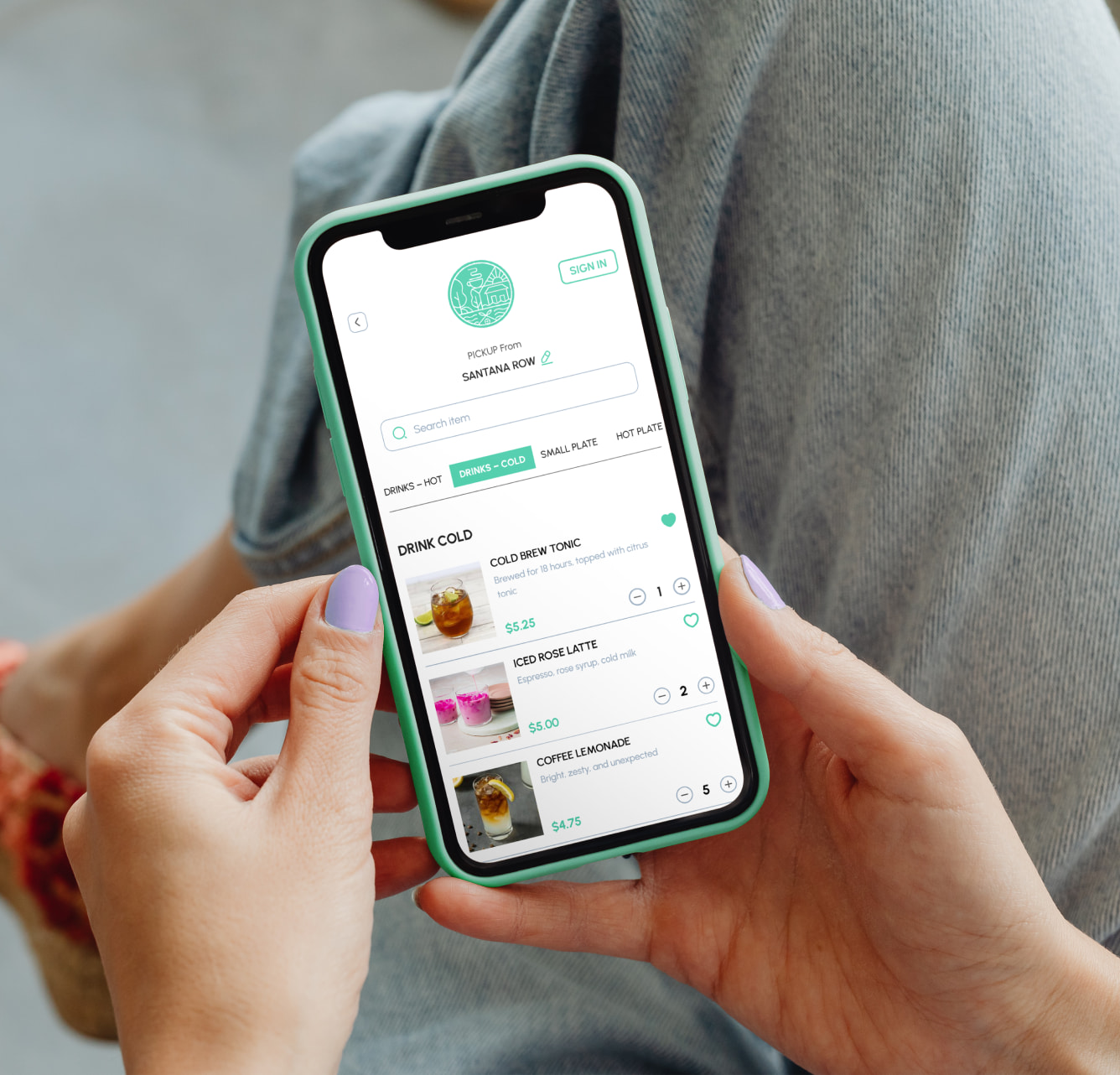

.gif)
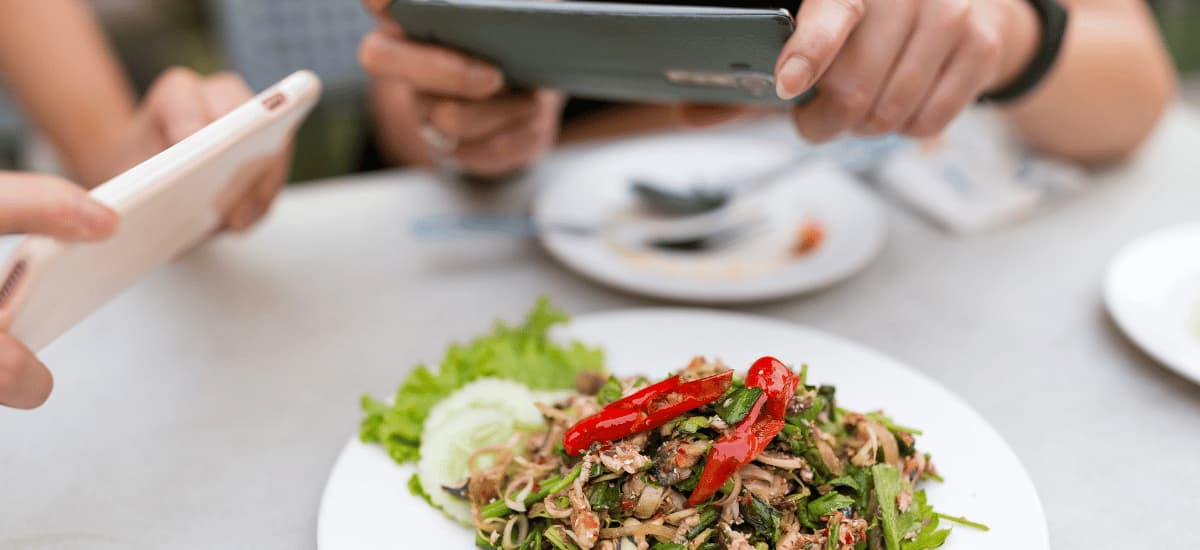
.png)

